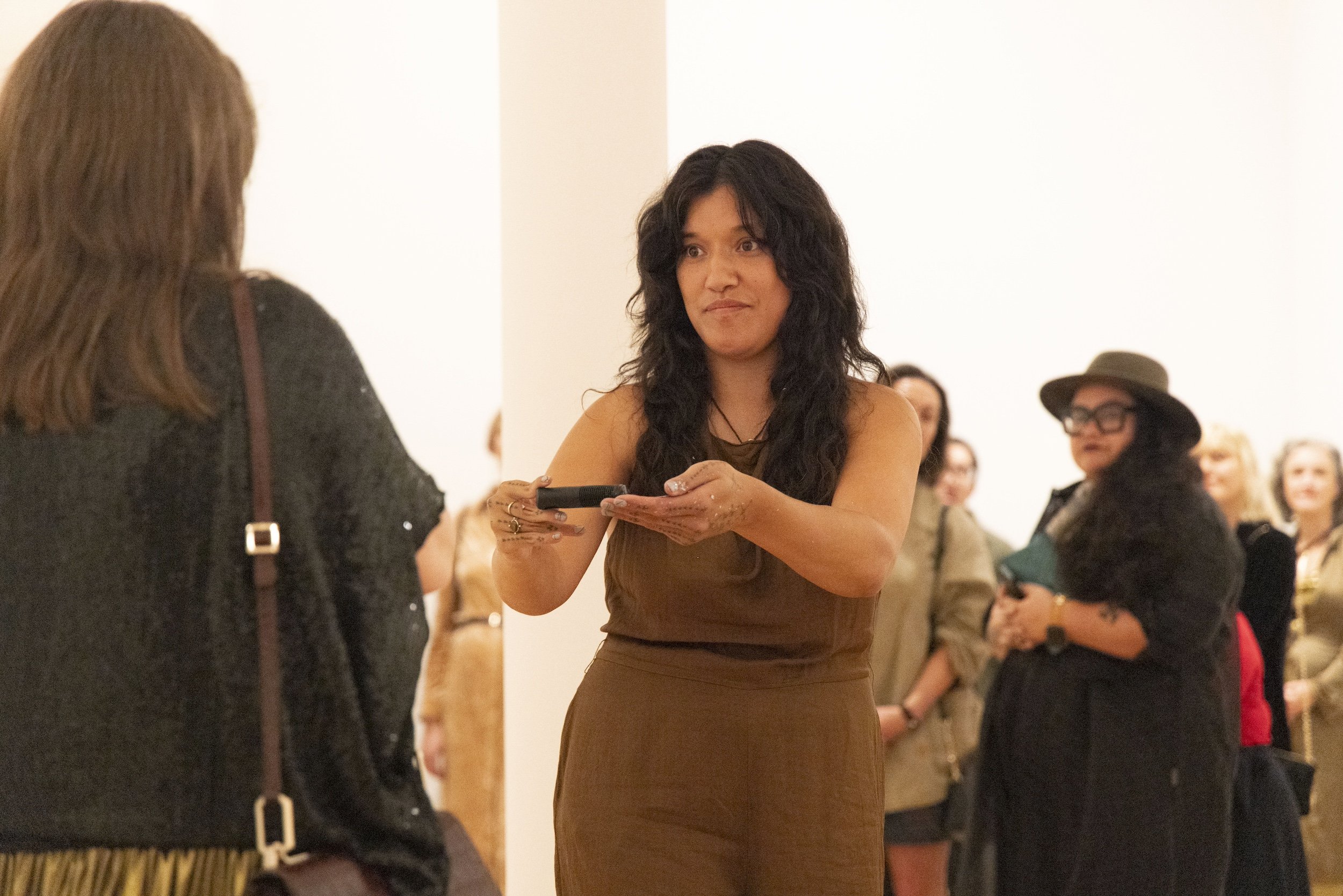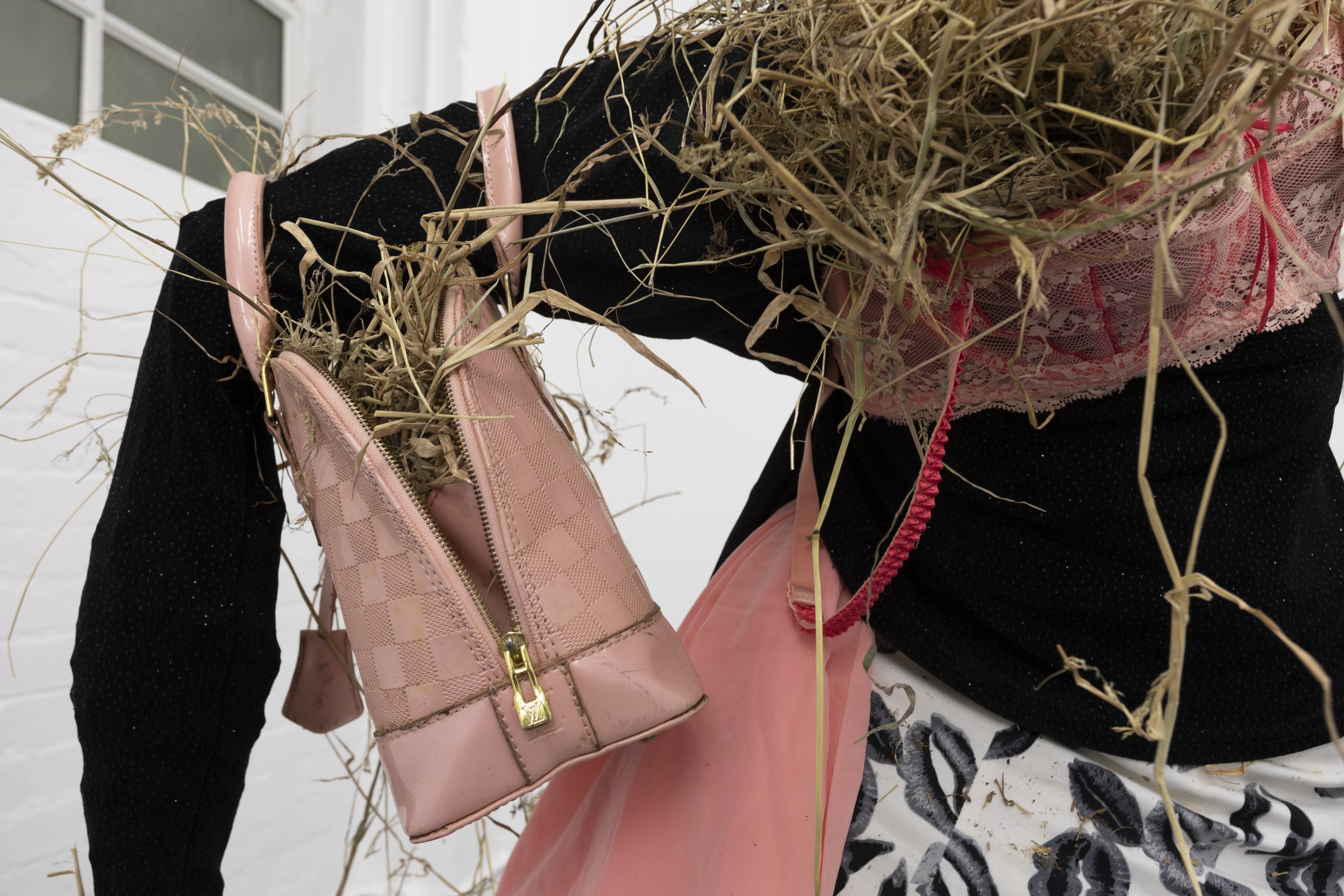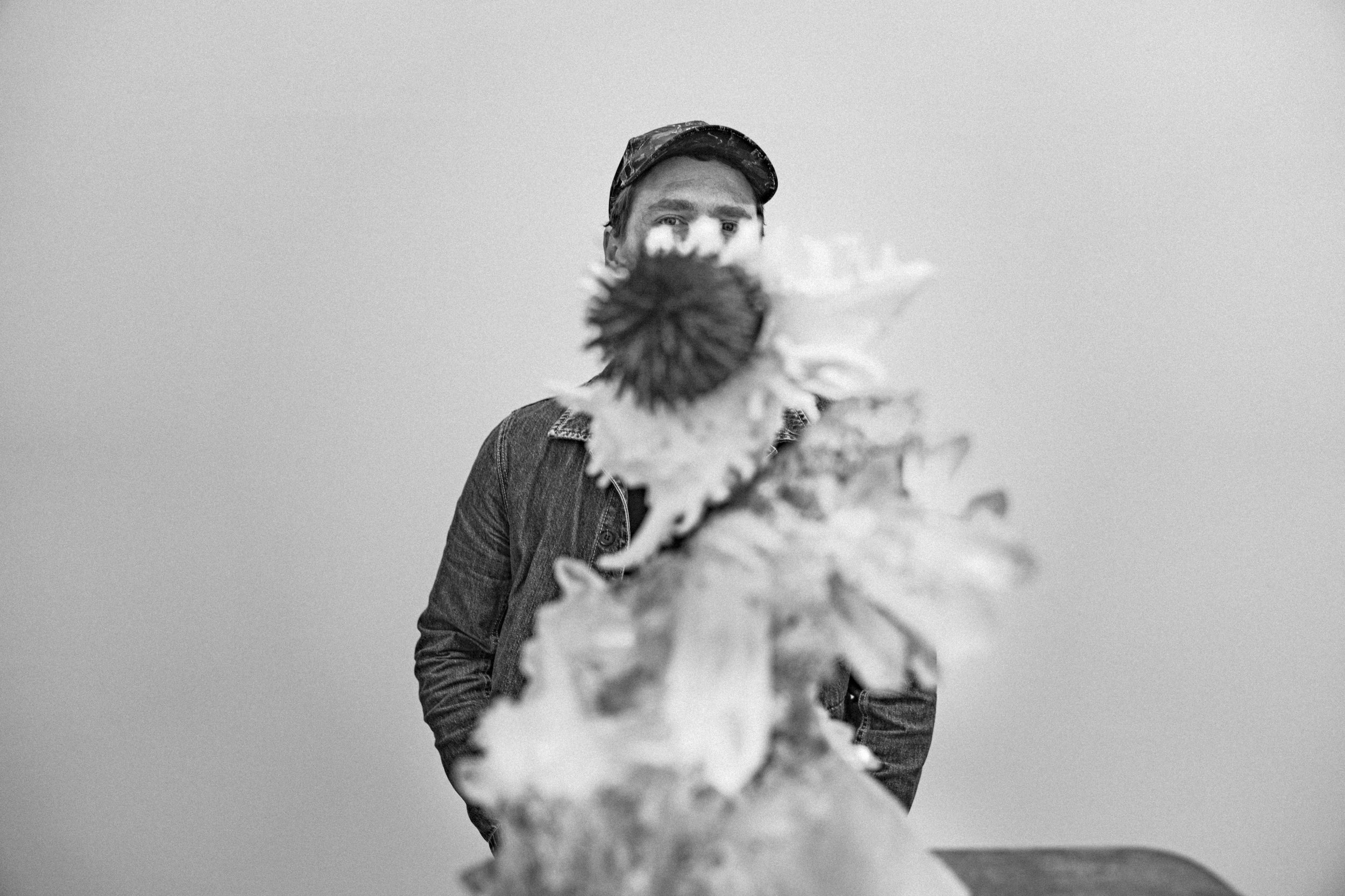Artist Q+A with Samara Alofa, PollyHill and Litia Tuiburelevu
We speak to the creative team behind the music and visuals of HOME, the centrepiece of Paloma Schneideman aka PollyHill x Samara Alofa’s collaborative music project, AQUARIES (2023).
The video releases on the album’s first anniversary, marking both its solar return and a new era as the remixes have just been completed (watch this space!). The music video, co-directed by Litia Tuiburelevu and PollyHill, embraces the song’s otherworldly themes, featuring a performance by renowned artist Rosana Raymond (Sāmoa, Tuvalu, Ireland and France). Written by Alofa, HOME explores their complex relationship to Aotearoa, Tonga and Sāmoa as they consider what it means to belong to those lands as a queer, non-Christian person with an affinity for pre-colonial mythologies.
HOME is set in pulotu/bulotu, the underworld or place of darkness. What draws you to this space and its stories; how entwined is this spiritual underworld with the queer ‘underground’ you move in as musicians?
SA: More so than Pulotu, it is the goddesses and grandmother figures that draw me in, because of what they represent in the context of pre- and post-colonial life. Pulotu is a place or realm where these goddesses reside. Often when I am songwriting, I write out the story or poem first and then work it into to the music, in this process of writing I tend to draw from my own reality and then connect it back to Pasifika Mythology and its archetypes, like Hikule‘o, the Goddess of Pulotu. Pulotu and its darkness as a concept in this case represents the realm that is elsewhere not here, right in front of you. I don’t want to commodify these aspects of my culture, but lean into them. Embrace and express what I feel with pride and make others feel proud, whether you are mixed, live in the islands or live far away. There are tangible and intangible aspects of our culture, and the intangible aspects can be the ones that carry you a long way on your journey sometimes; ‘home’ is written in the likes of exactly that and taking comfort in knowing that there may be a Goddess in Pulotu who is there for you if you need her ... perhaps.
PS: I know Samara has a very specific context from which their songwriting comes, so whilst I feel slightly less equipped to talk about that and Pulotu, I do see the parallel in ‘Home’ the concept and Home within a queer context feeling like something fluid and ever-changing. If we embrace the idea of ‘chosen family’, I guess that extends to the notion of a ‘chosen home’—the one you build within yourself—be it for necessity or choice. For those looking to belong or searching for possibility, solace can always be found underground, so for that reason, I think the underground void-like setting of this video is completely married with what AQUARIES is as a music project—for the others and escapists.
How did you think about visioning this formless place, giving it a physical presence?
PS: The notion of ‘home’ being less physical and more intrinsic is a sentiment Litia, Samara and I all sort of felt as we were originally jamming concepts. Mara and Litia were able to conjure a very specific powerful visual language that aligned with the cultural undertones of the song. As the producer of the track, it made editing the video and overall pacing instincts very tangible, the bones were already there in the music to align the form of the physical cut. And then shoutouts to Jon Baxter at Perceptual Engineering who kind of was the glue / additional fruity factor to tie the visuals together with some VFX.
LT: I was drawn to the idea of a ghostly, gothic fale (house) which acts as a portal into the ‘void.’ From there, the darkness would act like a solvent on Rosana’s body—liquifying and sublimating it to oblivion. To give the void some visual dimension/structure, we added a loop of the Matariki star cluster (Pleiades in the constellation of Taurus), which was in the sky when we filmed the video. Sāmoa’s malu symbology also appears halfway through, offering a protective grid around Rosana. Although these details mightn’t be obvious at first watch, it was important for us to embed these cultural specificities into the work. I’d like to acknowledge Yuki Kihara’s work Siva in Motion (2012), Lisa Reihana’s Tai Whetuki (2015), Under the Skin (2013) and Lost Highway (1998) as sources of inspiration.
Who are the goddesses who rule the underworld who Rosana is embodying?
LT: Samara is Māori, Sāmoan and Tongan, and I’m Fijian and Tongan (we recently discovered we’re second cousins). Within our rich cultural mythologies, specific deities are guardians of death, the underworld, etc. When conceptualising the video, we wanted to visualise what that journey of returning to the primordial ‘home’ might look like.
Samara spoke of her reverence for Hine-nui-te-Pō and Hikule‘o, and how she wanted to have a woman journey the viewer through an otherworldly space. The imagery she described was beautiful and grotesque—flesh, gnashing teeth, blood clots, darkness, swaying hips. Instead of embodying a specific deity, we thought our wahine should be a celestial guardian journeying us from the physical to the non-physical plane—a dancer of death in many ways. We instantly knew Rosana was the perfect person to embody this spirit.
What does it mean to ‘rule’ that place?
LT: I prefer to think of it as guarding instead of ‘ruling’. Guardianship embraces more of a protective energy. They’re caretakers of their realm, entrusted with specific roles and responsibilities to achieve balance within the greater cosmic enterprise. The deities can also be tricksters, with wicked tempers, too. If you fuck around, you will find out! For this video, we wanted her to feel wise, mysterious, and playful.
All photos: Nicola Sanford
Full video credits:
Music Credits:
Written by Samara Alofa and Paloma Schneideman
Mixed by Ben Lawson
Video credits:
Concept by lead talent: Rosanna Raymond
Artwork: Kahu Kutia'
Directed by: Litia Tuiburelevu and Paloma Schneideman
Edited by: Paloma Schneideman
DoP: Ezra Simons
Gaffer and 1st AC: Caleb Corlett
Focus puller: Ethan James
Art and Production Design: Jahmeila Quarter
Hair, Makeup and Styling: Ashley Southgate
Stills: Nicola Sandford
Production Assistant: Shaquille Wasasala
Visual effects: Jon Baxter at Perceptual Engineering
With thanks to NZ on Air Music
















